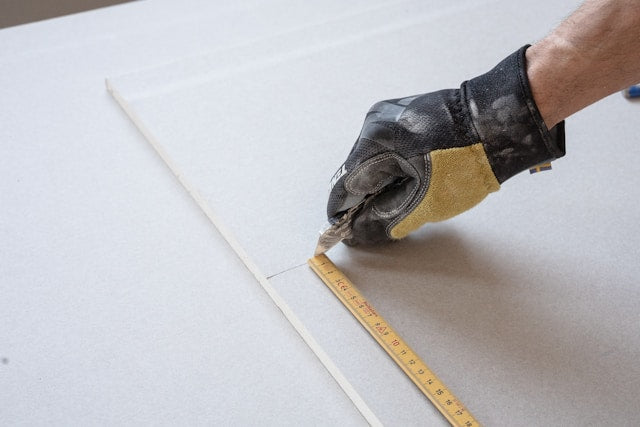
How to Choose the Right Size Access Panel for Your Project
Form It Access PanelShare
Choosing the right size access panel is crucial for easy maintenance, repairs, and efficient functionality. Whether you’re installing an access panel for plumbing, electrical systems, HVAC units, or other hidden areas, it’s important to select the proper size to ensure accessibility and seamless integration with your space. In this guide, we’ll walk you through the essential tips for choosing the perfect access panel size for your home or commercial property.
1. Understand the Purpose of the Access Panel
When selecting the right size access panel, the first step is to assess its intended use. Are you installing the panel for maintenance on plumbing, electrical wiring, HVAC systems, or something else? Understanding the function of the access panel will help determine how large or small the panel needs to be.
- Plumbing Access Panels: These should be large enough to allow easy access to pipes, valves, or meters.
- Electrical Access Panels: Choose a size that accommodates circuit breakers or wiring for convenient inspection and maintenance.
- HVAC Access Panels: Larger access panels may be needed for ducts, vents, or filters, depending on the system’s complexity.
2. Measure the Area to Be Accessed

Before purchasing an access panel, measure the dimensions of the space that needs to be accessed. The panel should be large enough to accommodate the equipment or area behind it.
- Extra Space: It’s always a good idea to allow a bit of extra room around the equipment to make it easier to perform maintenance or repairs.
- Fit and Accessibility: A panel that is too small can make it difficult to reach pipes or wires, while one that is too large can be unnecessary and aesthetically unpleasing.
3. Standard vs. Custom Access Panel Sizes
- Standard Sizes: Access panels come in common sizes, such as 8x8 inches, 12x12 inches, 14x14 inches, and 24x24 inches. These sizes are widely available and offer convenience for most applications.
- Custom Sizes: If your space or equipment requires a specific fit, custom-sized access panels may be the best option. Many manufacturers can create panels to your exact specifications, offering a perfect fit for any unique needs.
4. Consider the Location of the Panel

Where you install the access panel is just as important as its size. Consider the following:
- Wall Installations: Ensure that the panel size fits the wall’s dimensions and accommodates any hidden systems or utilities behind the wall.
- Ceiling Installations: Access panels installed in ceilings may need to be larger or reinforced to handle heavier frames and to provide easier access to overhead systems.
5. Plan for Easy Access and Future Maintenance
When selecting the right size, think about long-term usability and future maintenance needs:
- Regular Maintenance: Choose a panel size that provides comfortable access for regular inspections or repairs. Panels that are too small may limit movement or make it difficult to work in the space.
- Future Access Needs: Even if you only need access to one system now, consider if other systems might need to be serviced in the future. Opting for a slightly larger panel can save time and hassle down the line.
6. Check Building Codes and Regulations
Depending on your location, building codes may dictate the maximum or minimum size for access panels in certain installations. For example, access panels for electrical systems might have specific size requirements for safety. Be sure to check local building regulations or consult with a contractor to ensure your access panel size complies with these standards.
7. Consider Aesthetic Integration
The access panel size should complement the aesthetics of the space. If you’re installing the panel in a visible location, such as a living room or kitchen, you may want a smaller, more discreet panel.
- Flush-Mounted Panels: These panels sit flush with the surface of the wall or ceiling, providing a sleek, modern look that blends well with your home’s design.
- Frameless Panels: These offer a cleaner, more streamlined appearance, perfect for areas where aesthetics are a priority.
8. Material Considerations for Access Panels
The material of the access panel is just as important as its size. Make sure to choose a material that suits the installation location:
- Moisture-Resistant Panels: For bathrooms, kitchens, or areas prone to moisture, consider moisture-resistant panels to prevent damage from humidity.
- Heavy-Duty Panels: For high-traffic areas, look for impact-resistant access panels that provide extra durability and protection.
Conclusion:
Choosing the right size access panel for your space is essential for both functionality and aesthetics. By considering factors such as the purpose of the panel, the area to be accessed, and local building codes, you can ensure a smooth and efficient installation. Whether you choose a standard or custom size, remember that the right access panel will make maintenance tasks easier and provide long-term value for your home or business.
Check Out Our Access Panels Online
If you're looking for high-quality access panels in various sizes, we offer a wide selection of standard and custom-sized panels to meet your needs. Browse our collection today and find the perfect access panel for your next project.

